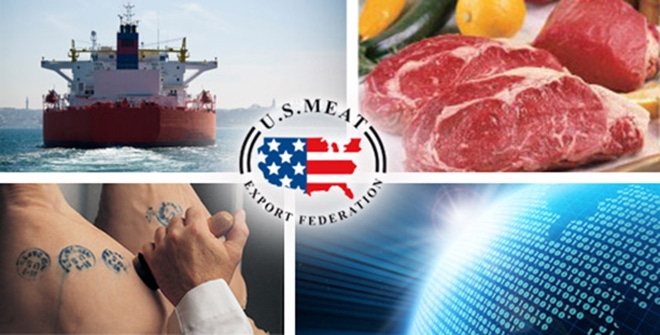May 18, 2015

While U.S. pork exports still face market access barriers in many destinations around the world, some notable gains were achieved in recent weeks.
Pork fat eligible for China
Effective May 11, U.S. pork fat (under HS code 020910) was added to the list of products eligible for export to China. This regulatory change clarifies that fresh/frozen cutting fat or fat trimmings are eligible for China, while other forms of edible fat (such as rendered pork lard) are not eligible.
Commercial opportunities for U.S. pork fat are considerable in China, especially in the processed meat sector. It is important to note, however, that any U.S. pork fat shipped to China must be from a plant eligible to export to China, and must comply with all requirements outlined in the Food Safety and Inspection Service’s ractopamine control program.
New certification option for Peru
In April, Peru became the latest South American market to add a new trichinae certification option for U.S. pork and pork products. The updated requirements mirror those implemented by Chile earlier this year and are similar to those in place for Colombia since 2014. Previously, fresh/frozen pork destined for Peru either had to test negative for trichinosis, had to be cooked, cured or frozen under requirements detailed in the Code of Federal Regulations. Exporters serving Peru now have the option of certifying that products are derived from hogs raised under the Pork Quality Assurance Plus program.
Peru is a much smaller market for U.S. pork than either Colombia ($134 million last year) or Chile ($49.3 million), but demand is growing. Pork/pork variety exports to Peru in 2011 were just 400 metric tons valued at less than $1 million, but last year totaled 1,672 mt valued at $4.5 million. The revised requirements will expand opportunities for U.S. pork in Peru’s rapidly growing retail and foodservice sectors. With transit time being several days less than to Chile, shelf-life concerns present less of an obstacle for chilled pork destined for Peru. When the product is eligible for relief from trichinosis testing and treatment regulations, freezing requirements are less burdensome. So exporters shipping frozen pork to Peru can also benefit from the reduced time and cost of getting their products to the market.
Macedonia now open to U.S. pork
Effective May 7, fresh and frozen U.S. pork became eligible for export to Macedonia. Previously, only U.S. poultry was eligible for Macedonia. The market remains closed to U.S. beef.
Located on the Balkan Peninsula, Macedonia is one of the successor states of the former Yugoslavia. Though it has a population of just over 2 million, Macedonia imports a considerable volume of pork from the European Union. Last year the EU reported 9,459 mt of pork exports to Macedonia, valued at $26 million. Canada has been Macedonia’s other main pork supplier in recent years, although exports in 2014 were just 1,353 mt (down 72% year-over-year), valued at $3.6 million.
While Macedonia has been a candidate for membership in the EU for some time, it has not yet entered formal accession negotiations with the EU and hasn’t adopted EU requirements for imported meat.
EU removes pork heart incision requirement
U.S. pork recently gained some relief from EU trade restrictions when the pork heart incision requirement was removed for all market hogs less than one year of age at the time of slaughter. The requirement remains in place, however, for animals more than one year of age (sows and boars) at the time of slaughter – and because a heart incision procedure has not been developed for animals of this age, pork derived from these animals remains ineligible for the EU.
The heart incision requirement has no scientific justification, so its removal for hogs less than one year of age is an overdue change that will benefit the U.S. industry. The short-term impact will be small, however, as the current pork supply situation in Europe – combined with a weakened euro and lower-than-normal EU prices – makes for a difficult business climate for U.S. pork.
Export data sources: Global Trade Atlas and USDA
You May Also Like



